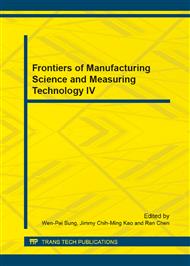p.1934
p.1938
p.1942
p.1946
p.1950
p.1954
p.1960
p.1967
p.1972
Replacement of the Power Generation Unit and Benefit Allocation Model Based on the Power Generation Performance
Abstract:
With the increasingly prominent energy problem, environmental constraints continue to strengthen and the constant attention to the security and stability of the entire power system, Power generation units replacement and benefits distribution urgent need to address, so we construct the power generation replacement and benefit allocation model, which adds the performance constraints of Power generating units, emissions constraints, power consumption constraints and cost constraints on the basement of the traditional power generation optimization model’s limitation. Moreover, this article gives the displacement increase efficiency calculations, benefits allocation model based on the Shapley Value, which will ultimately make contributions to the rational allocation system to increase benefits and the unit generation power initiatives. Key words: generation performance, benefits Allocation, power generating replacement, shapley value.
Info:
Periodical:
Pages:
1950-1953
Citation:
Online since:
August 2014
Authors:
Price:
Сopyright:
© 2014 Trans Tech Publications Ltd. All Rights Reserved
Share:
Citation:


